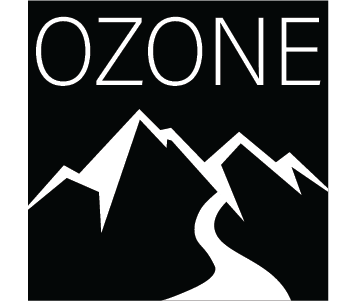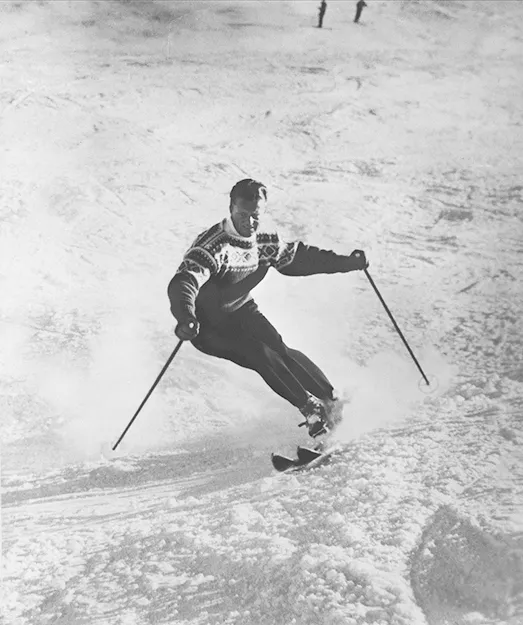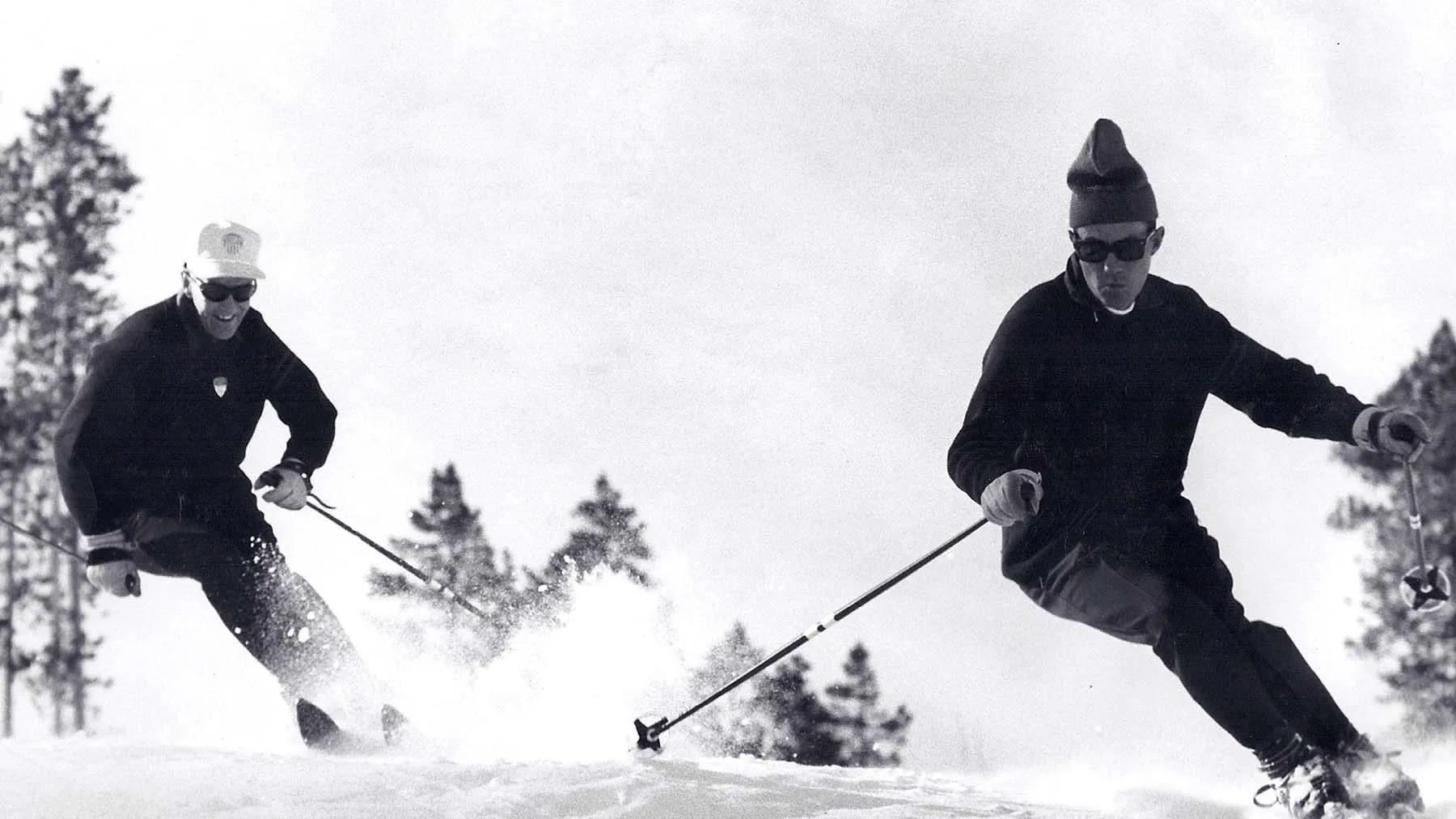Inclination vs Angulation
- Miklós Ozsváth
- Sep 16, 2024
- 10 min read
Updated: Sep 19, 2024
Angulation and inclination are surrounded by common beliefs and misunderstandings.
The reason is that alpine skiing has more than one hundred years of history, but it does not mean that everything our ancestors invented can be applied today.
We must analyze and understand the fifty-year-old techniques and decide whether we use them or only respect them as part of our history.
The alpha and omega
We can't forget that in the middle of the 20th century; skiers had wooden skis and leather boots; the metal edge was more a protection for the ski, and it could not build such a good grip as nowadays. The skiers used to ski on natural, ungroomed slopes. The compact slope that we feel under the ski every day was unknown back then.
This equipment could not provide stable support in turn. Imagine trying to turn a bicycle on a muddy or icy road. You will balance with all your efforts; you will not dare to tip the bike.
A bit later, at the end of the 20th century, the equipment was already more advanced but far from what we can use now. The plastic ski boot was much better, as was the plastic-metal-wooden ski, but the long, 40-50 m radius skis did not allow for the short-radius, sharp turns that are common today.
Angulation was a must-have posture to balance in these uncertain circumstances.
The ski techniques of the 1940s and 1950s worked more or less well with the equipment of the 1980s. There was no need for revolutionary innovations. The biggest change came with the 21st century: the carving skis.
Suddenly, the radius got shorter, from 40-50 m to 10-20 m., so the forces that can support the skier suddenly became explosively bigger.
When the radius is reduced by half, the force that can support the skier increases twice ( F = m*v²/r).
Changing from an older 50 m radius ski to a 12 m radius carving in one year was like sitting from a horse carriage to a jet. It is common knowledge that the carving ski turns easier, but the real change is that it provides significantly better stable support. With the old skis, a skier needs to balance over the ski, but with a carving ski, a skier can go into a turn with a higher level of confidence. Back then, nobody had any idea how to manage this equipment. However, ski schools could not be closed for a couple of years because the industry needed time to figure out the ski techniques for the new equipment.
Teaching books were based on the ski techniques of the past century, and the development was rather an evolution than a revolution. Old movements mixed with new ideas until, finally, this onion consists of so many layers that now it is a challenging task to peel them off to distinguish the traditions from the functions.
Now, without analyzing and understanding the inclination and the angulation, we may misuse these elements, and as a result, we may strive for a bad form of movement.
Quick Overview
For most skiers, angulation, moving with the upper body over the outside ski or leaning outside, is like the trademark of skiing. In this sense, skiing without angulation is called inclination and is considered a mistake.
When somebody spends enough time on the ski slopes, they can see that these two words are used as alternatives or variants of a movement form. When somebody skis without angulation, sometimes called banking or, as a synonym, with inclination.
Is these two really so close to each other? Let's compare the two phrases functionally!
The inclination is
a relation between the support and the center of the body mass;
that ensures stability in certain situations;
when external forces, in addition to gravity, affect the body.
By the way, this is a main factor in creating a turn.
The inclination belongs to a turn as a component and the origin. There is no turn without inclination.
Angulation is a posture, a movement.
As its name suggests, an angular position is made in the body.
In the strict sense, every position when the body is not straight is an angulation.
In skiing, it looks like the legs and the upper body are not in the same plane.
It is not an essential component of the turn; a turn is possible without angulation.
Many skiers try to use angulation to make a turn, but it is better to know that angulation is not for making but for tweaking a turn.
The behavior of the Center of Mass (COM) in a dynamic environment

The center of the mass represents the whole body mass at one point. In the case of a standing human body, it is around the abdominal area. When the form of the body changes, the placement of the COM changes as well. For example, stretching the arms over the head will move the COM higher.
A common misunderstanding is that the COM is always at the central area of the body, but this is not true: the COM can be outside the body.
In the case of high jump, while the jumper arches their back, the center of mass stays below the bar, but the body can move above it.

The trajectory of the center of mass is determined earlier by the jump, and changing the posture in the air wouldn't change the path of the center of the mass.
In skiing, it is a bit different; while the angulation can slightly affect the radius due to the ski's sidecut, however, this effect is only a minor and temporary modification.
Inclination
Inclination is a must-have component of a turn, not only in skiing but also in roller skating, biking, motorbiking, etc. We can say "inclination" with simple words "leaning in."
Amount of inclination
A certain radius-speed combination requires a specific inclination due to the forces that push the skier (biker, etc) into the turn. Sometimes called centripetal, sometimes centrifugal forces. Usually, a force is called "centrifugal" (it is a "pseudo" force) if the skier feels that a force is acting away from the center of the turn, and it will "throw" the skier away from the turn. It is only a feeling; nothing throws us from the turn (neither a biker). When losing the grip, the body will move straight along the last tangent but not in the direction of the radius.
Centripetal force really exists, which pushes the skier or biker into the turn. However, there is also a small issue with it in skiing; skiing is not a circular movement but rather a simple harmonic motion. There is some connection, but the circular motion doesn't explain some important parts of skiing (i.e., the transition, the peak by the apex, etc). When we want to use physical models to describe skiing, circular movement is not the best model for this purpose.

A shorter radius and higher speed create bigger forces, and bigger forces require a bigger inclination angle to stay stable.
A too-big inclination may pose a risk of falling in or slipping out.
A too-little inclination can lengthen the radius or, in the worst case, can cause a fall like a highsider.
The skier or biker (skater, runner) must find the ideal inclination to the desired turn; of course, there is a tolerance range, depending on the situation.
This process is a guess based on the experiences.
We can observe on the motorbike if the biker doesn't dare to produce the necessary inclination in a hairpin corner, they can not make the turn.
In skiing, we may rarely experience a fall due to too much inclination because a bigger inclination creates a shorter radius, and the shorter radius creates bigger forces that can support the body.
Many falls look like failures due to a too-big inclination, but better observed, we can see that sliding out of turn is not the same as falling in.
The real reason for these falls is the loss of grip caused by other failures, such as postural mistakes, bad timing, contact issues with the ground, etc.
A more common mistake is the insufficient inclination to the desired cornering radius.
There is no signed road in skiing, so if we are lucky, we will experience only a longer turn, which may go unnoticed.
In a worse case, the skier will hit another skier, or the snow can block the outside edge of the ski, and the skier will fall over the skis.
Timing and inclination
The inclination cannot be interpreted as a static state, as seen in a picture. It is a permanent dynamic interaction with the environment, so the timing is as important as the amount or angle.
Staying at the physical background, in the case of a circular motion, timing is not really interesting. The centripetal force is due to the centripetal acceleration, and the centripetal acceleration is because the direction of the velocity (speed) is changing. This change is predictable; we can say that the change is constant. On the contrary, in the case of simple harmonic motion, the velocity, the acceleration, and the direction are changing - similar to skiing. So, in this case, the change is changing, too.
The inclination itself modifies the turn in many ways; for example, due to the radius, a skier sometimes needs inclination in advance. Practically, in skiing, the skier must lose the balance to create a turn.
That's why the amount of inclination is never valid at the given moment; it is only adequate for a later radius. The inclination anticipates the future radius or trajectory.
Timing is a key element of the inclination. Without time, we can not understand the inclination.
That's why analyzing the inclination in a photo can be misleading; we don't know what happened in the earlier frames or what the skier's intentions are in the next seconds. Skiing is not a series of frames of pictures.
The inclination is more of an intention that is physically defined by the turn and the trajectory, and usually, we don't need to do it with some sophisticated movement.
Most of our mistakes are being afraid and blocking what physics is supposed to do.
When we let the physics do his job, the inclination would be fine.
Angulation
So, when the angulation is not an inclination variant, what is it?
Angulation is a movement, a posture, that can
prepare the posture for subsequent actions;
or change the ground contact in a particular way (in skiing, the edge angle, for-aft load, ski rotation);
or, for example, in the case of GS, it can help to avoid a harder collision with the gate.
For example, a skier may use angulation to create a temporarily bigger edge angle than the inclination angle.
Motorbikers' grip is limited, and they may need less equipment angle on the tarmac than the inclination belonging to the radius. In this case, a biker can use negative or opposite angulation as a skier.
The angle of the body with the ground is only equal to the angle of the inclination when there is no angulation.
In the presence of angulation, the apparent angle we see in the picture is not the angle of the inclination. It can more or less.
Two main movement structure variants of angulation in skiing
The angulation can be made in many ways, but in skiing, mainly two main versions are used to form it:
In the hip joint (between the thigh bone - femur - and the pelvis). In this case, the pelvis and torso, including the lumbar spine - the core - build a stable, intact structure, and the mobile part is the hip socket. This is the more functional and healthy way to make an angulation.
With the lateral bend of the lumbar spine. In this case, the pelvis and the femur are more fixed to each other, and the mobile center is higher in the body: the lumbar area. It also means that the torso and core can not be really stable. This is an unstable and unhealthy posture, which can cause back strain.
On the surface, these two may look similar, and the ski suit hides many details; that's why most skiers are unaware of proper and improper versions of angulation.
It is often seen that skiers try to move their upper body toward the outside ski or downhill, doesn't matter how.
Many skiers try to use angulation to make a turn, but it is good to know that it doesn't significantly affect the center of the body weight.
In fact, it's better to ski without any angulation than with a wrong angulation.
How angulation can be formed
A proper angulation is made with the hip joints.

Hips are ball-and-socket joints that enable the legs to move in many directions and have a wide range of freedom.
In the case of angulation, the outside femur is nearly extended in the hip socket, while the inner femur is more flexed.
The extended outside femur is abducted, but the inside femur is slightly adducted or neutral, depending on the degree of hip flexion.
A deeper position also requires more femur rotation.
Both must be stabilized with some rotation but with a different rotation.

If the angulation is built in the hip sockets, the torso is stable and stacked based on the stable core.
In the case of the lateral bend of the trunk, the mobile part is the core, so the whole body becomes more fragmented and unstable.
In the first case, the pelvis and the hips lead the process by shifting towards the center of the turn. The shoulder is kept over the pelvis.
If the lateral bend leads the process, the main intention is to move the upper body and the shoulders to the outside of the turn, and the hips and the pelves move to the center of the turn later, just as a consequence.

All these movements affect the posture, fore-aft balance, edge grip, and ski rotation.
A minor change in the hip socket will majorly affect the ski or posture.
Limitations
There are some limitations we have to consider if wanna use angulation in skiing.
If someone wants to use a pronounced angulation with a big edge angle, they need massive hip joint mobility, more extensive than the majority of everyday people have. Otherwise, they must bend the spine and lose the core; there is no other way.
Therefore, when somebody has a limited range of motion in the hip socket, they cannot ski with a big edge angle and show an expected skier image with a nice angulation (that doesn't mean it can't turn functionally well, without a big angulation).
For them, the solution is either to work out their mobility in a gym first or accept that they are anatomically unable to ski in a deep angulated position.
Base principles of angulation in skiing
The angulation should be
in the hip socket between the legs and pelvis;
but not in the lumbar spine between the pelvis and the upper part of the torso (chest and shoulders).
Depending on the circumstances, it's not necessary to make a turn, but it can be a useful postural solution.
Similar to the inclination, it's not a static state but a process, so timing is crucial. We must consider the previous and subsequent turn progress to analyze the angulation. (For example, we may see preparatory angulation at the turn's end to anticipate the next turn's inclination. )
In summary, don't mix inclination and angulation. These are different things with different functions.
One is a necessary part of the turn, and the other is an optional postural movement that may change the form of the body or the body-equipment system and can be used when needed. There is no turn without inclination, but there are turns without angulation.
There are turn phases when we can see special angulation without inclination (for example, during the transition).
On the other hand, it is possible to see a perfect, stable apex of the turn without any angulation.
The most important point is to use them functionally, always with proper and healthy movement quality, not just because this is how a skier looks like.



























Kommentarer